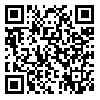BibTeX | RIS | EndNote | Medlars | ProCite | Reference Manager | RefWorks
Send citation to:
URL: http://jdisabilstud.org/article-1-2575-en.html
Background & Objectives: Cerebral palsy is one of the most common neuromuscular diseases in children; it is associated with secondary disorders. Yoga is a mind–body exercise originating from ancient Indian philosophy. These exercises consist of a breathing movement system focusing on self–awareness, breathing, and energy. Yoga is a sport regulating the needs and abilities of the individual; it provides opportunities to do it for all people. Predictions about cerebral palsy show that it is not curable; however, some of its symptoms and consequences are treatable. Conventionally, most treatments and interventions in cerebral palsy are based on a medical approach focusing on reducing spasticity and preventing shortness and deformities. On the other hand, yoga exercises include physical and mental exercises during which physical and mental coordination and discipline can be used to achieve physical and mental peace and control stress and anxiety. So, this study aimed to evaluate the effect of eight weeks of modified Hatha–yoga exercises on the strength of flexor trunk muscles in children with spastic diplegic cerebral palsy.
Methods: This research was a quasi–experimental study with a pretest–posttest design and a control group. The study sample consisted of 14 children with spastic diplegic cerebral palsy aged 7–14 years who were studying in special physical education schools in Isfahan City, Iran. They were randomly divided into an experimental group (7 persons) and a control (7 persons) group. After obtaining permission from the General Education Department of Isfahan Province and the Education Department of the Exceptional Section of Isfahan, two schools of Nafisi Roshan and Shahid Ahmad Hor were given to the researchers. The researchers, with the help of a specialist physician and school physiotherapist, assessed children in the GMFCS (Gross Motor Function Classification System) 1–3 motor class after an initial assessment. They received written consent from their parents. In the posttest phase, two members of the control group were excluded from the study due to non–compliance with the research conditions. In this study, the strength of the flexor muscles of the trunk of children with spastic diplegic cerebral palsy in two groups was measured with a digital mouse dynamometer in two stages of pretest and posttest. For eight weeks, the experimental group performed three sessions of 45–60 minutes of Yoga each week under the supervision of an experienced instructor. During this time, the control group did not participate in any regular physical activity program. In this research, to analyze data, descriptive statistics (mean and standard deviation) and inferential statistics (non–parametric tests) were used. The Mann–Whitney U test was used to examine the intergroup difference and the Wilcoxon test to examine the intragroup differences at the 0.05 level in SPSS 24 version.
Results: The results of the Mann–Whitney U test showed a significant difference between the groups in the posttest stage in terms of the strength of the trunk flexor muscles patients with diplegic spastic cerebral palsy (p=0.030). Also, the Wilcoxon test revealed that Hatha–yoga exercises had a significant effect on the experimental group (p=0.018), while no significant change was found in the control group (p=0.273).
Conclusion: According to the research findings, performing eight weeks of modified Hatha–yoga exercises increases the strength of the trunk flexor muscles in people with spastic diplegic cerebral palsy.
| Rights and permissions | |
 |
This work is licensed under a Creative Commons Attribution-NonCommercial 4.0 International License. |



